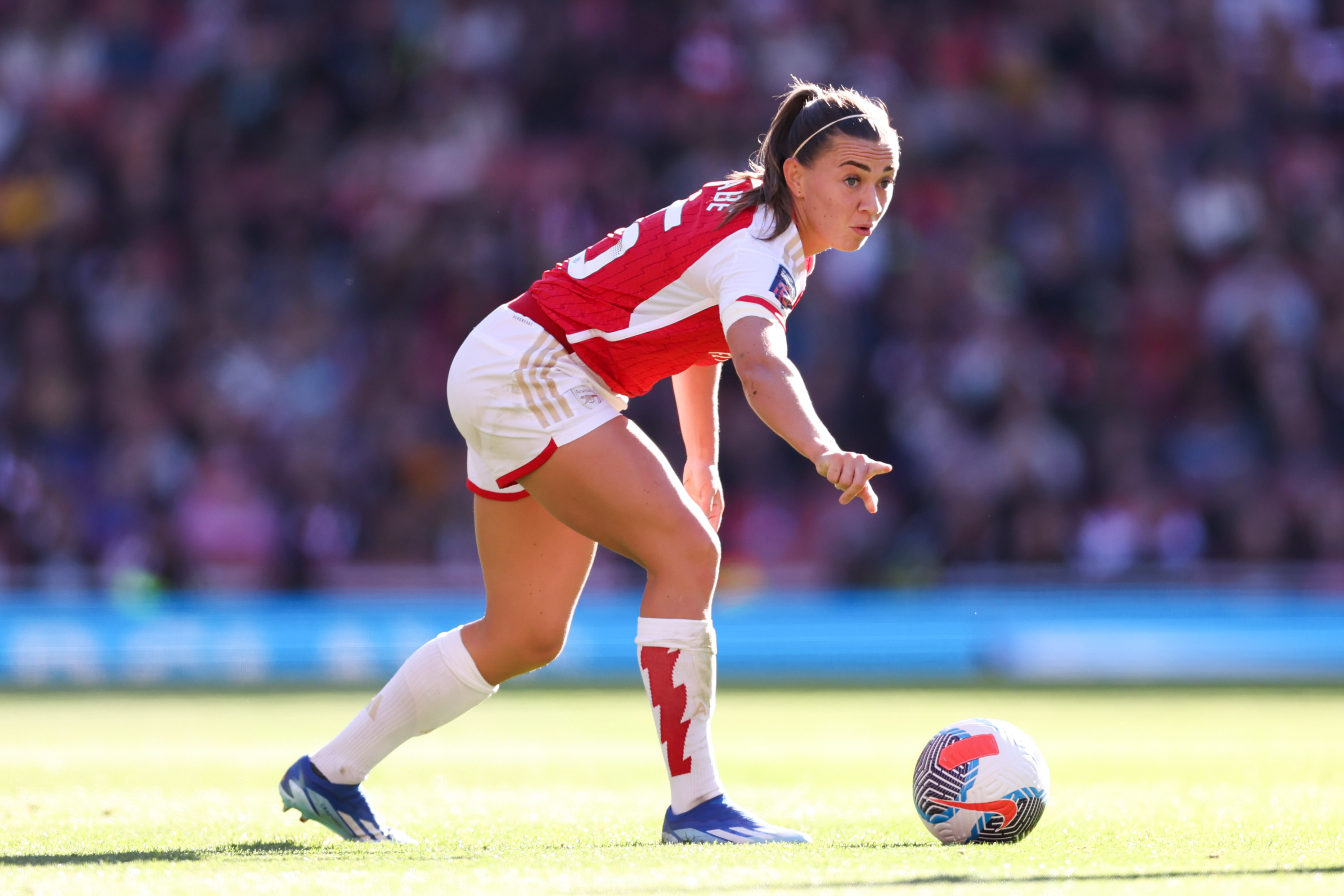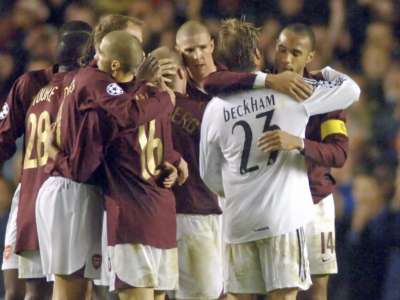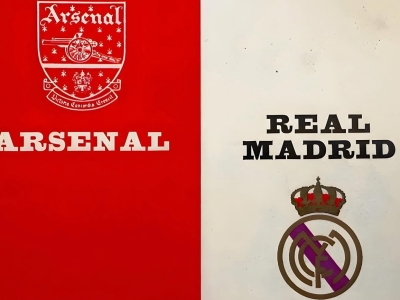Daisy Goodhand analyses Arsenal Women’s 3-1 win over Manchester United at a sold-out Emirates Stadium.
Introduction:
Arsenal were coming into this game off the back of a confident 4-0 victory against London City Lionesses, but also two previous defeats - one of which was a 1-0 loss against Manchester City that saw Arsenal exit the FA Cup.
Manchester United had won their last two WSL games against Villa and Brighton, as well as victory over Southampton in their previous match in the FA Cup.
In terms of the Women’s Super League table, both teams needed this win. If Arsenal could get the win they would move seven points clear of Manchester United in third, reducing the gap between them and both City and Chelsea to just three points (following City’s victory against Chelsea the previous day).
If Manchester United could get the three points, they could close the gap on Arsenal to just 1 point.
Line-ups:
Arsenal stuck with the 4-2-3-1 formation they had been utilising for most of this season. Sabrina D’Angelo got the nod ahead of Manu Zinsberger to start in goal, and Amand Ilestedt and Leah Williamson were unavailable for this game, so Lotte Wubben-Moy and Laia Codina started as the two centre-backs.
Emily Fox was also unavailable due to international duty, so Katie McCabe (right-back) partnered Catley (left-back) in the fullback positions. Lia Walti, Victoria Pelova and Kim Little made up the midfield, with Little positioned slightly higher, playing an attacking midfielder role. Cloe Lacasse started on the left wing, with Beth Mead on the right and Stina Blackstenius up front.
Manchester United also went with the 4-2-3-1 formation, a formation they have come to use in nearly every WSL game this season. They tend to use the 4-2-3-1, only using a different formation in the 4-3-3 a handful of times. Their personnel is often interchangeable due to rotation, but in this game they stuck with the centre-back pairing of Maya Le Tissier and Millie Turner, with Hannah Blundell at right-back and Gemma Evans left-back.
Mary Earps started in goal, with Katie Zelem, Lisa Naalsund and Ella Toone making up the selected midfield trio, with Toone playing the higher up attacking midfielder role. Lucia Garcia (left-wing) and Geyse (right-wing) were the wide players, with Nikita Parris playing through the centre as the striker.
Arsenal in possession, Manchester United out of possession:
In possession, when building up from the back, the two centre-backs for Arsenal would position themselves on opposite sides, with Codina extremely wide so McCabe could be positioned higher up the pitch. D’Angelo would often be positioned outside her box between the two centre-backs, higher up the pitch, so she could attempt long balls into the feet of Arsenal players – especially McCabe.
Garcia would be forced to drop into the wide midfield role to cover McCabe, but Mead would support McCabe by picking up any loose balls or offering a passing option. With Mead dropping deep to help out, Little would attempt runs in the space Mead left behind out wide, looking to find her with balls over the top.
Arsenal would often look to try and play the ball back to the goalkeeper to retain possession safely and start building up from the back again. They have done this most games this season. Geyse and Parris utilised their speed to try and put pressure on Codina, who would often be forced to play rushed passes to D’Angelo. United did this well and won a free kick early on from Codina pulling back on Geyse to prevent her from getting on to the loose pass.
Arsenal demonstrated how to break down this United press in just one sequence of play. Parris moved across to try and mark Codina and Naalsund was high up, marking Pelova, who was operating on the right side of the pitch to help build-up play. The United press was not quick enough, and Arsenal moved the ball up the field extremely well. Codina played the ball out wide for McCabe who dragged Evans high up out of position, and McCabe did well to play it quickly to Mead. This forced Turner to move to press Mead but again the ball was moved quickly behind Turner for Blackstenius to run onto. There was just too much on the ball and Earps retrieved.
Arsenal did this a lot throughout the game, dragging United players out of position to create space and play through the lines. Walti used her hold up play extremely well and this would drag United players out of position to draw runners for Arsenal (Pelova and Little) into the spaces left behind.
McCabe would drop into midfield when Arsenal had the ball up one flank. This forced Evans in-field and opened up space for Mead out wide, who had to be marked by Garcia instead (who wasn’t as strong defensively as the fullback).
On the other flank, Blundell was occupied marking Lacasse in 1v1 situations, with Geyse forced to mark Catley as she was the wide player in the United system. Lacasse thrived in these 1v1 situations, utilising her strong dribbling ability. It was this ability that allowed her to drive with the ball and draw fouls to win free kicks in dangerous areas for Arsenal. Lacasse could also drop deep to drag Blundell out of position and this would allow Catley to make the run in behind. Geyse was often not switched on with her defensive work and wouldn’t follow Catley straight away, giving her more time to pick out a cross or pass.
Arsenal were putting United under a lot of pressure from set pieces in the first ten minutes. An early set piece forced a punched clearance from Earps, and the second one put United under so much pressure it forced an own goal. McCabe aimed for the near post and Geyse could only clear into the back of the net, allowing Arsenal a 1-0 lead.
When the ball was out wide for Arsenal, Zelem and Naalsund would move across to help defend on that side, but this opened up significant space in the midfield for Pelova and Little.
Arsenal utilised Blackstenius’ hold up play a lot to drag defenders out of position and allow for runners in behind. On a number of occasions, however, the Arsenal runners would be caught offside.
Manchester United were switched off on a number of occasions and this allowed Arsenal to move the ball quickly and efficiently. McCabe linked up with Mead out wide and with Pelova making the run in behind she could pull the ball back for Blackstenius. This resulted in a rushed United clearance that allowed Lacasse in space at the back post to put Arsenal 2-0 up.
Lacasse was forcing Blundell into 1v1 situations throughout the game that Blundell struggled to deal with defensively. This resulted in Lacasse getting in behind and creating a chance for Mead, causing Evans to give away a penalty. Little converted, putting Arsenal 3-0 up.
In the second half, Kyra Cooney-Cross came on for Pelova. Cooney-Cross utilised her ability to drive with the ball, moving past several United players and even looking for pull backs in the box. She also assisted Walti in helping Arsenal switch the ball quickly from one side to the other to catch United out.
The United backline would often be forced to operate more towards one side of the pitch when Arsenal would have more players there (Blackstenius, McCabe, Mead and Cooney-Cross). This would open up space on the other flank which Arsenal could exploit quickly, playing the ball to Walti who could move it quickly to Catley, with Lacasse providing the overlapping run.
Even when United had time on the ball they were sloppy with their passing and would often overhit the pass; this gifted possession back to Arsenal. This also created a number of chances for Arsenal in the second half, with Mead hitting the post twice and Blackstenius and Lacasse both gifted 1v1 situations against Earps.
Arsenal became more protective of the ball in the final 10 minutes, playing it back to safety to see the game out rather than trying risky passes. This should have allowed them to see out the 3-0 win, but they conceded from a set piece in the final minutes of added time.
Arsenal out of possession, Manchester United in possession:
Straight from kick off when United had possession, we could see how Arsenal were looking to press when they didn’t have the ball. Arsenal were not pressing the centre-backs originally, as they knew there was little danger when they were on the ball.
Instead they looked to press the second line of Man United – this prevented good ball players like Zelem from having time and space on the ball. Mead would press right-back Evans out wide, forcing her into long balls and when the long ball came, either centre-back for Arsenal would come out straight away to clear.
Little prevented the passing route to Zelem, giving her no time on the ball and forcing her to play back. Pelova was tasked with marking Toone, so would follow her, even if she went out wide to receive the ball. Garcia was operating deep out wide, close to the halfway line with McCabe coming deep to put her under pressure. Arsenal had a high back line, with both of their CB’s looking to clear balls straight away when a pass was attempted down one flank or over the top.
After conceding the first goal, Man United tweaked their build-up play slightly, almost matching Arsenal with the two centre-backs Turner and Le Tissier splitting. Blackstenius would then move across to press the centre-back who had the ball, forcing rushed or backwards passes.
United had most of their joy with balls in behind for Garcia, Parris and Geyse to run onto, but the likes of Catley did their defensive duties well. Lacasse would even double up to support Catley when Geyse had the ball out wide.
When United looked to play it to the feet of Parris, Wubben-Moy was quick to intercept. She also did extremely well to deal with Geyse, even though she would often try to play the ball behind the England defender to beat her for pace.
When United tried to cut it back in the box though, Arsenal did well to cut out the ball. Often the United runners in behind were caught offside, gifting possession back to Arsenal.
On the rare occasion that Arsenal were sloppy in possession, United would try to capitalise on that and overload their attacking half. This led to the deflected shot from Toone that went just wide. The only real attacking threat United posed was on the counter attack, picking up on mistakes by Arsenal (which happened rarely throughout).
Straight from kick off in the second half, United were still attempting long balls to Parris, who would often lose the aerial battle against the Arsenal centre-back (even McCabe at times) or would be caught offside.
There was a short period around the 65/70 minute mark where Arsenal were giving away the ball more than they had been. United failed to capitalise on this, often getting the shot away too late so it was blocked or timing the run wrong and being caught offside.
Manchester United had one last attempt at getting something out of the game as they won a corner in the final minutes. Arsenal switched off for this set piece and conceded the goal, losing their clean sheet with a 3-1 final score.
Key Discussion Points from the Game:
This was a statement win for Arsenal and definitely one that puts pressure on the other teams above them in the table. Now only three points behind both Chelsea and Manchester City, there are discussions over whether Arsenal are still in competition for the title. This result gives the impression they are not done fighting and if they focus on taking each day as it comes, there is no denying Arsenal still have every chance at winning this league title.
In this game, Arsenal had plenty of positives to take and there were a lot of similarities between successes in this game and the other big games they have achieved victory in this season.
Jonas Eidevall’s side were clear in their game plan from the offset. Even if Arsenal came under pressure in the opening ten minutes, they dealt with it well.
They utilised the key strengths of their system well, finding space out wide, utilising the striker dropping deep to create space and playing through the lines when they could.
Arsenal also looked defensively solid in this game, not allowing any joy for United. When their strikers received the ball into feet they were under pressure from the centre-backs. Arsenal dealt well with runs in behind and didn’t allow space for United to get shots away.
If Arsenal continue to play like this in other big games they will no doubt send a message to the other top teams of their intentions. If they can learn how to apply these successes to breaking down defensively set-up teams and achieve victory no matter the opponent, they are going to send a strong message of their title intentions.
Subscribe to Daisy Goodhand on Substack: daisygoodhand.substack.com








